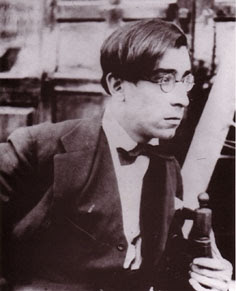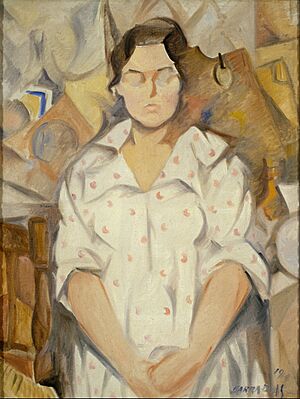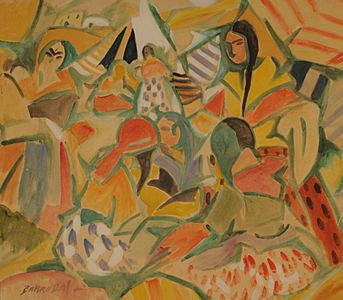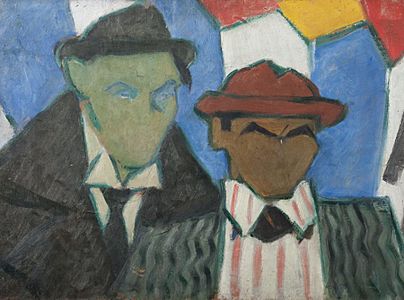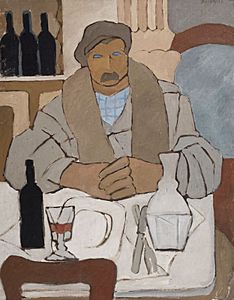Rafael Barradas facts for kids
Rafael Pérez Giménez Barradas (born January 4, 1890, in Montevideo, Uruguay – died February 12, 1929, in Montevideo) was a talented Uruguayan modern painter and graphic artist. He spent a lot of his life working in Spain.
Contents
Who Was Rafael Barradas?
Rafael Barradas came from a family of Spanish immigrants. His older sister, Carmen, was a well-known pianist and composer. His younger brother, Antonio, became a poet. Rafael loved art from a young age and mostly taught himself how to paint.
His first professional jobs were creating illustrations for magazines. In 1912, he had his very first art show alongside another artist named Guillermo Laborde.
Early Travels and New Ideas
In 1913, Rafael got a chance to travel to Europe with a friend. They went to Milan, Italy, where Rafael learned about a new art style called Futurism. He also spent time in Paris, France, where he saw many new art trends.
These experiences helped him create his own unique art style. He called it "Vibrationism," which was his own version of Cubism. The next year, he moved to Barcelona, Spain. There, he met a group of young poets from Catalonia.
Rafael didn't stay long in Barcelona. He decided to walk to Madrid. But he got tired and hungry in a place called Aragón. A kind farming couple helped him. In 1915, he married their daughter, Pilar, in Zaragoza. Later that year, he had his first solo art show there.
The next year, he went back to Barcelona with Pilar. His mother had also moved back to Spain to be with them. In Barcelona, he met another Uruguayan painter, Joaquín Torres García. Torres García was very impressed by Barradas's "Vibrationism" and even used some of its ideas in his own art style.
Life and Art in Madrid
In 1919, Rafael finally moved to Madrid. He opened an art studio near a famous train station called Atocha. He often met with Spanish writers, poets, and artists at local cafés.
One of his new friends was Gregorio Martínez Sierra, who asked Rafael to design costumes and sets for plays at the Teatro Eslava. Rafael also drew pictures for books published by Martínez Sierra's company. He worked for art and literature magazines too.
In 1925 and 1926, Rafael showed his art in several exhibitions. He also spent some time in Saint-Jean-de-Luz, a port town, where he painted beautiful watercolors of the harbor and the people.
After returning to Spain, Rafael and Martínez Sierra stopped working together. Rafael moved to L'Hospitalet de Llobregat. There, he created two important series of paintings. One was called "Los Místicos" (The Mystics), which were religious artworks. The other was "Estampones Montevideanos," inspired by the port and a neighborhood called Barrio Sur in his hometown. He felt his health was getting worse, so he thought these might be his last works. His final project in Spain was helping to organize an art show for the famous writer and artist Federico García Lorca.
Rafael returned to Uruguay in 1928 because he was very sick. He passed away a few months later. He left most of his artworks to his family. His family kept the paintings on display at their home until 1969. Then, they gave the artworks to the Uruguayan government, hoping to create a "Barradas Museum." Today, you can see his collection at the Museo Nacional de Artes Visuales in Montevideo.
Selected Paintings
See also
 In Spanish: Rafael Barradas para niños
In Spanish: Rafael Barradas para niños


